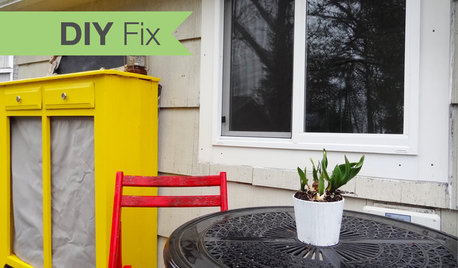4 ton replacement estimate
chbweber
12 years ago
Related Stories

BUDGETING YOUR PROJECTConstruction Contracts: What to Know About Estimates vs. Bids
Understanding how contractors bill for services can help you keep costs down and your project on track
Full Story
Replace Your Windows and Save Money — a How-to Guide
Reduce drafts to lower heating bills by swapping out old panes for new, in this DIY project for handy homeowners
Full Story
GREAT HOME PROJECTSHow to Replace Your Lawn With a Garden
New project for a new year: Lose the turfgrass for energy savings, wildlife friendliness and lower maintenance
Full Story
MOST POPULARKitchen Evolution: Work Zones Replace the Triangle
Want maximum efficiency in your kitchen? Consider forgoing the old-fashioned triangle in favor of task-specific zones
Full Story
GREAT HOME PROJECTSHow to Replace or Revamp Your Garage Doors
Boost curb appeal and maybe even security with new garage doors. Find out cost ranges and other important details here
Full Story
FURNITUREOld Furniture: Clean, Reupholster or Replace It?
A veteran upholstery cleaner weighs in on the options for found, inherited and thrift store furniture
Full Story
BATHROOM DESIGNWhich Bathroom Vanity Will Work for You?
Vanities can be smart centerpieces and offer tons of storage. See which design would best suit your bathroom
Full Story
DECORATING GUIDESMood Makers: 5 Easy Ways to Put Your Home On Trend
You don't need a full renovation to modernize outdated interiors. These tips can help your home feel fresh and current without a ton of work
Full Story
CONTRACTOR TIPSLearn the Lingo of Construction Project Costs
Estimates, bids, ballparks. Know the options and how they’re calculated to get the most accurate project price possible
Full Story
DECORATING GUIDESMission Possible: A Designer Decorates a Blank Apartment in 4 Days
Four days and $10,000 take an apartment from bare to all-there. Get the designer's daily play-by-play
Full Story





tigerdunes
chbweberOriginal Author
Related Professionals
East Lake Solar Energy Systems · North Tustin Solar Energy Systems · Randolph Solar Energy Systems · Richfield Solar Energy Systems · Brushy Creek Home Automation & Home Media · Chicago Home Automation & Home Media · Clearwater Home Automation & Home Media · Irvine Home Automation & Home Media · Odenton Home Automation & Home Media · Surprise Home Automation & Home Media · Westminster Home Automation & Home Media · Worcester Electricians · Aurora Fireplaces · Freehold Fireplaces · Simi Valley Fireplacesmike_home
zver11